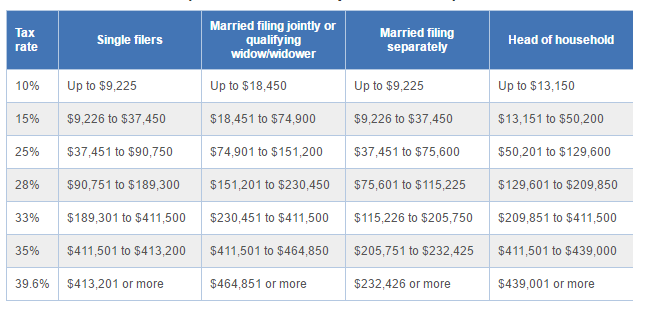
Investments Explained Simply
It’s surprising how many people know nothing about investments like stocks and bonds, even though these types of financial instruments are serious catalysts for the growth of the overall economy. I’m going to explain the world of stocks and bonds in the simplest ways that I can.
Stocks
Stocks are basically pieces of companies. You can own pieces of google, apple, amazon and your other favorite businesses by purchasing stocks. Typically, businesses that are as big as these have millions of shares (another term for stocks). When you purchase a stock, you’re not just buying something that you expect to magically increase in value with time, but you’re buying a piece of a business that you expect to do well.
There are two ways you make money with stocks. Sometimes this business you buy will return their profits back to shareholders (you, the owner of the stock share). When you get money for owning stocks, that is called a dividend. The other way you can make money from a stock is when you sell it. The business might be more valuable within a year, causing the stock price to rise higher. When you sell the stock, you realize profits, or capital gains. Dividends and capital gains are the two ways you make money with stocks.
Stocks can be very volatile. The value of a stock can fall completely down to zero if the business fails but it can also rise meteorically if it is doing well. It’s not uncommon for some individual stocks to fall 10-60% within a day and go right back up again. Stocks can be very good for long-term growth of your money but can be risky in the short-term because of its volatility. For this reason, you should not invest in stocks unless you expect to be in the market for at least 5 years.
Bonds
Bonds are basically contracts where you give a “loan” to companies. So, for $1000, you can buy a bond from companies, or even the government. The government and companies will use that money you loan them to fund their projects, while you get a promise to get paid a certain percentage each year.
Assuming the company agreed to give you back 4% of the 1000 every year for 10 years, you’d receive 40 dollars every year for owning that bond. You will typically get paid that total amount in pieces on a semi-annual basis, $20 two times a year. By the end of the 10 years, the government or company will give you back your original amount, the $1000.
Bonds that are qualified as investment grade are typically less risky than stocks. You will get paid for as long as the company is alive, even if it is doing poorly. The only way you may not get paid is if the business goes out of business and doesn’t have enough money to distribute to lenders (you). This is different from stocks – if your stock went down to zero, you are entitled to nothing. But a company going bankrupt means you still have claims to the money you lent them. Usually bonds are good for cash flow – you get paid money directly more consistently than with stocks which you may have to sell to benefit from as much.
Mutual Funds
You may have heard a lot about mutual funds a lot but what exactly are they? Imagine mutual funds are a grocery cart of stocks or bonds that you hire someone to pick out for you. They’ll do the hard work of figuring out the best items (stocks/bonds) to put in. You can even get specialized baskets of stocks/bonds, like one that only picks the largest companies, or one that picks the smallest, high-potential companies. Mutual funds automatically diversify your portfolio compared to individual stocks and bonds by investing in multiple companies. If you had put a large portion of your money into just one stock (would you believe how many business owners put all their eggs into one business basket?), then you are susceptible to the risk that the business goes bust and you lose all your money. By diversifying between multiple stocks or bonds, your money has less risk of volatility while stabilizing the return potential of your money.
Mutual funds employ the use of stock picking managers, meaning it is an “active” fund. Many investors buy mutual funds with an expectation that this grocery cart of stocks or bonds will do better than anything they could pick out on their own. Typically, to have someone manage your investments on an active basis, mutual funds can take up to 1% a year or more away from your returns. This can be a poor choice that eats into your returns over the long term, compared to “index funds”, which I will discuss next.
Index Funds
Index funds are a type of mutual fund. The difference is that this grocery of stocks or bonds are made to copy the market. Instead of having someone pick out the investments on an “active” basis, a broad range of many stocks or bonds are put into a basket without much thought put into it.
The S&P 500 for example, is a very popular benchmark index fund that you will see mentioned in the investment world. It’s a collection of 500 biggest companies in the stock market. No sophisticated stock picking there at all yet everyone follows the S&P 500. They follow it because it represents the “market”. The S&P 500 is typically seen as a general measure of how the entire market is doing overall.
But why would anyone be interested in any index fund if they can get a manager to pick stocks for them? Doing as well as the “market”, or basically everyone else sounds unappealing to some.
However, studies have shown that index funds, funds that follow the market in a “passive” style, often do better than general mutual funds that are managed by an active manager.
This is partly because mutual funds typically charge up to 1% in fees every year while index funds charge extremely low prices that can go as low as 0.05%. To put this into perspective, imagine you had $500k to either put into a mutual or index fund. You would get charged $5000 per year on a mutual fund that charges 1% per year, while an index fund might charge 0.10%, which would only cost $500. Because you automatically save $4500 every year, this can make a huge difference on your long-term investment returns. For this reason, index funds are extremely popular in many investment management portfolios.
ETFs
Exchange-traded Funds, are increasingly popular investments and deservedly so. If index funds are a grocery basket of stocks and bonds, imagine that an ETF is an agreement that breaks apart that grocery basket index fund into many little pieces. ETFs feature a similar portfolio style as index funds with its passive investing, with the added benefit of lower prices.
As an example, the S&P 500 index fund currently costs over $2400 in mid-2017. The SPDR ETFs, which copies the S&P 500, can cost as little $15-100+. Buying just one ETF that costs $50 means you are indirectly investing in potentially hundreds of different stocks and bonds, which may normally cost thousands to do directly. This makes ETFs a very accessible investment vehicle that naturally diversifies your portfolio beyond the risk you would normally take from buying just a few expensive stock or bonds.
As a final point, diversification between different stocks and bonds will lower your risk but it will also stabilize your return potential, meaning that you will likely produce less returns for mitigating the risk. However, consider that investment management is about helping you reach your goals within the safest manner possible rather than chasing an absolute high return without regard to risk. Many investors make the mistake of chasing high potential returns without factoring in the risk they take to do it. When investing, make sure that you are not taking more risk than necessary and that your investment strategy is in line with your goals.
By reading this, you should be able to understand the basics of investing. Let me know if you have questions.
 In the context of investing, leverage means using additional money that’s taken out as a loan to invest into a product that is expected to produce higher returns. If someone takes a bank loan of 4% interest to create a coffee shop that can produce 20% return within the year, they will have made successful use of leverage.
In the context of investing, leverage means using additional money that’s taken out as a loan to invest into a product that is expected to produce higher returns. If someone takes a bank loan of 4% interest to create a coffee shop that can produce 20% return within the year, they will have made successful use of leverage.


